by Martin Green
How unlucky can you get?
Piaget invested heavily into the launch of the new Piaget Polo S only to have its launch event fall on exactly the same day as the horrible terrorist attack in Nice, a heat wave in New York where it was introduced, and just before the attempted coup in Turkey.
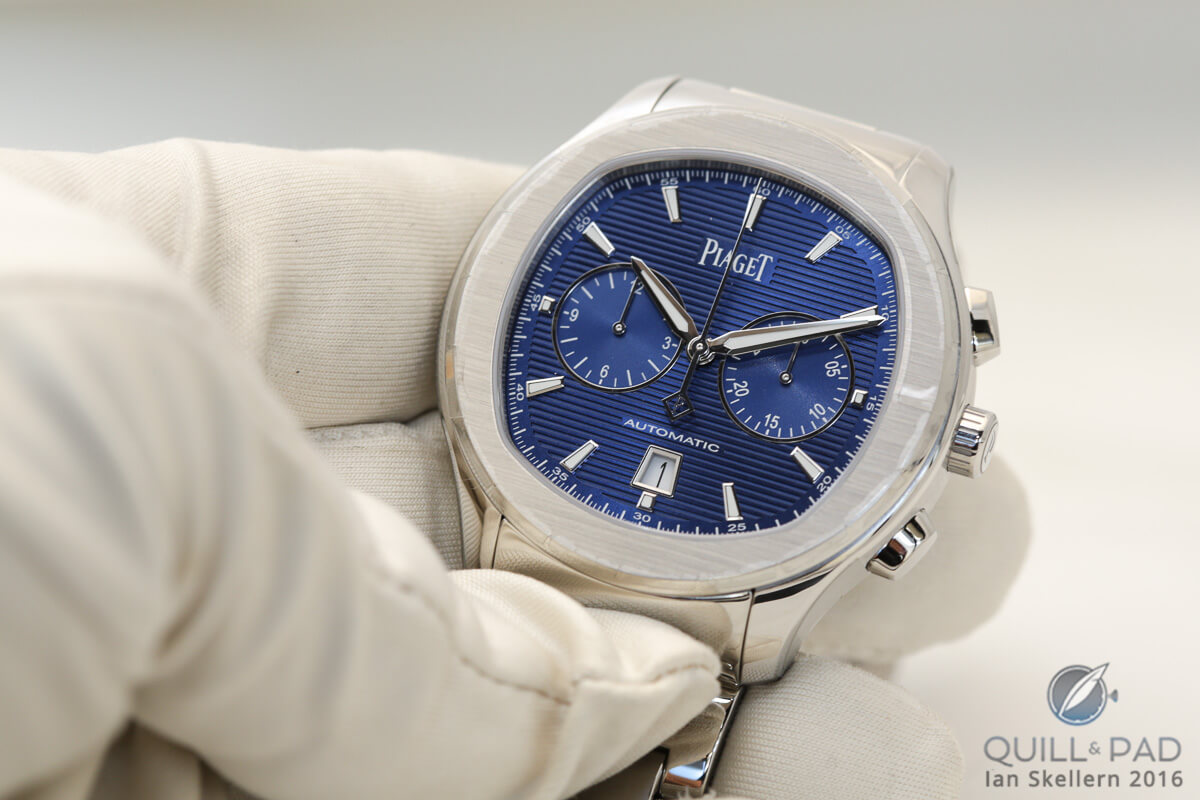
Piaget Polo S chronograph blue dial
In general, these are types of events that do not have a positive effect on the sale of luxury watches. And then there was of course the cold reception of the watch by the specialized press, many of which claimed that the new Polo S resembled some other watches by other brands a bit too much.
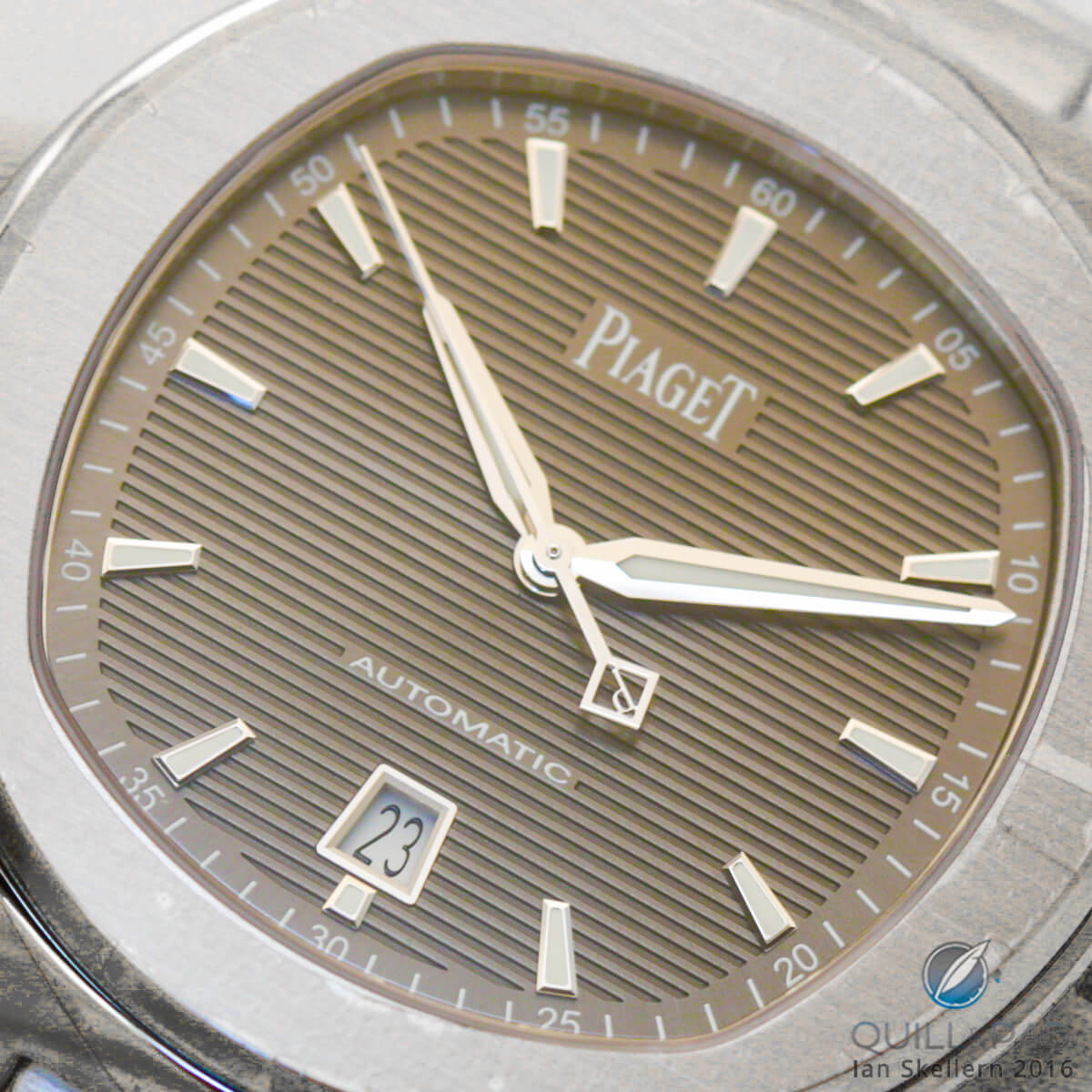
Piaget Polo S with brown dial
Desiring a classy, steel watch
But I don’t want to go there; I want to go back a few years instead.
Like many watch collectors and connoisseurs I found myself at a point where I desired a classy, steel watch made by an haute horlogerie brand. My excuse for “needing” such a watch was, of course, that I wanted an upscale timepiece that wasn’t as fragile as my gold watches.
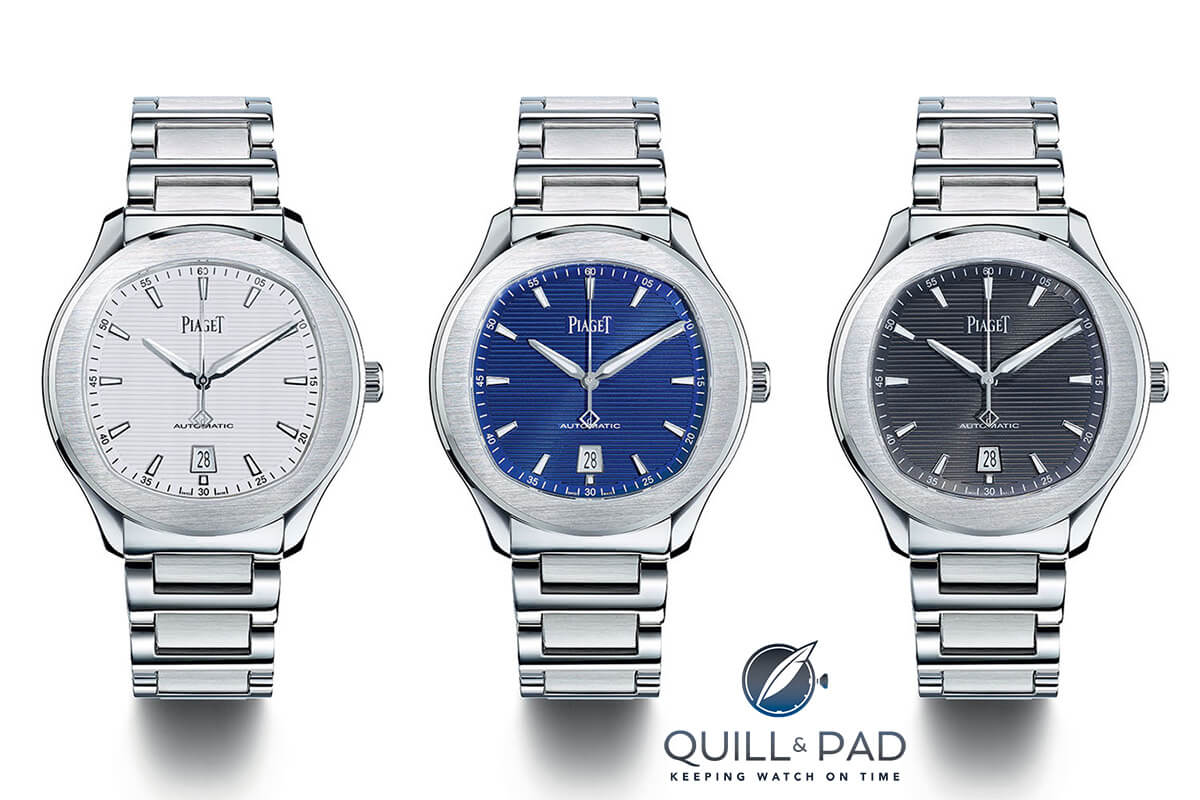
Piaget Polo S with time and date
The only problem with that was that I ended up treating my upscale steel watch with the same protective nature once I got it. Of course I considered the icons of the industry: the Audemars Piguet Royal Oak, the Vacheron Constantin Overseas, and the two steel watches people have been saying that the Polo S resembles most: the Patek Philippe Nautilus and Aquanaut.
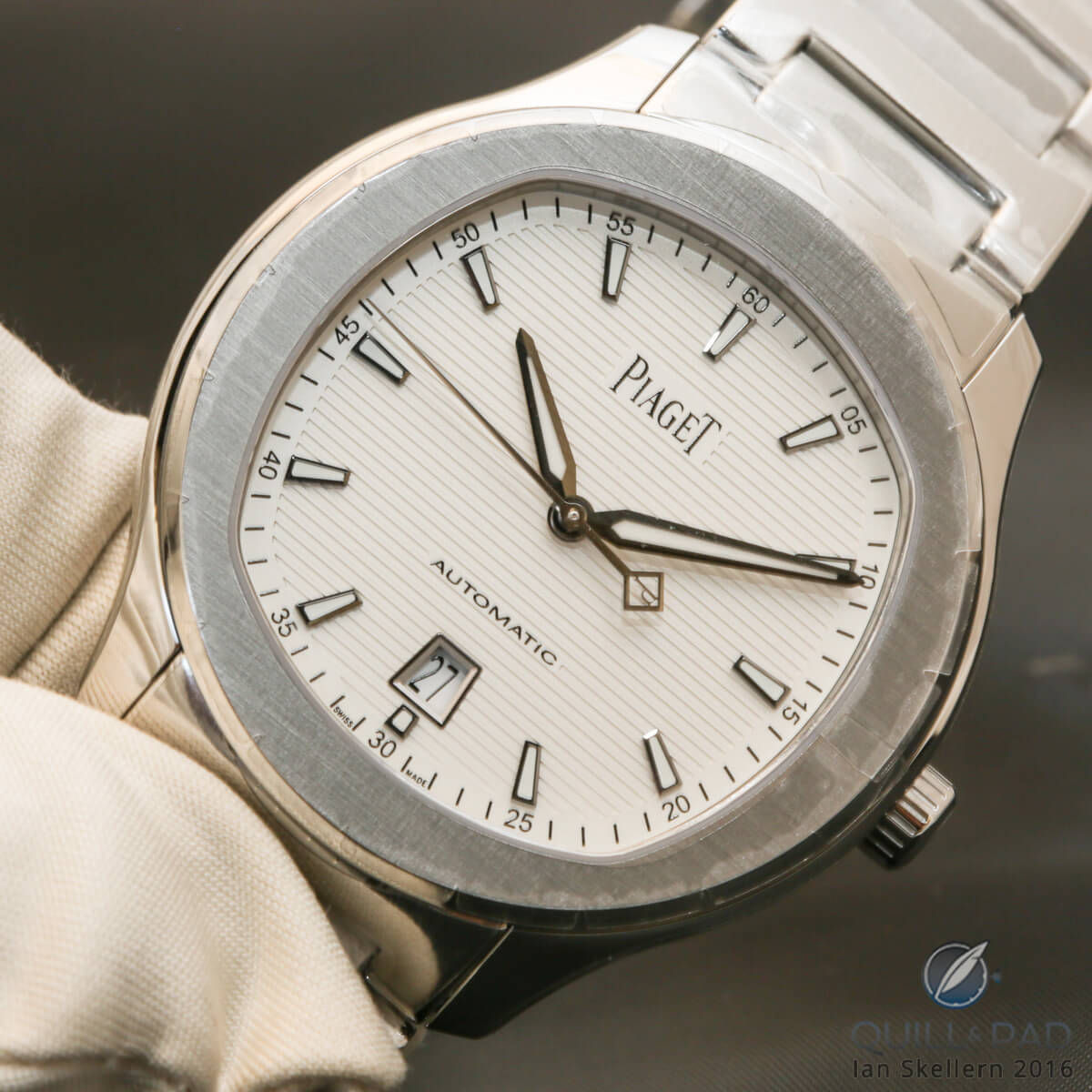
Piaget Polo S with white dial
The watch I ended up getting was none of these, and in fact has now already been discontinued for several years. It was the Piaget Upstream, which was introduced at the 2001 SIHH and discontinued in 2007.
What made me buy this watch was the incredible bracelet, whose clasp is integrated into the case thereby creating a watch with no visible clasp when on the wrist. This also meant that the clasp was not felt, resulting in one of the most comfortable steel watches I have ever worn.
But there was more.
The design of the case and the bracelet was unlike any other watch. The same can be said for the numerals that Piaget used on the dial. An abstract, futuristic, yet highly legible font that seemed to have come straight from the bridge of the U.S.S. Enterprise. Even a decade and a half after its introduction, it is still a very contemporary design.
What continues to surprise me the most is that this is the watch I get by far the most comments on from people inside the industry as well as people who couldn’t care less about watches (and often do not even wear one).

Piaget Polo S chronographs flanking what the brand calls the “time only” with brown dial
Piaget and steel: not a long love story
Since 1957, Piaget had been making watches exclusively in precious metals. I’ve heard that they made some steel watches during the 1960s exclusively for the Japanese market, but I have never seen one.
As a result, Piaget has become a master in working with precious metals. But as time progressed, and the Swiss watch industry entered a renaissance following the Quartz Crisis of the late 1970s, steel became more and more a choice as a new “precious” metal.
For the Upstream’s production, Piaget had to rely on an outside supplier to provide the steel parts of the watch, although they were finished and assembled in Piaget’s manufacture in Plan-les-Ouates on the outskirts of Geneva. Priced just above $6,000, with its sophisticated bracelet the Upstream simply couldn’t be produced cost-effectively with the majority of the work done by an outside contractor.
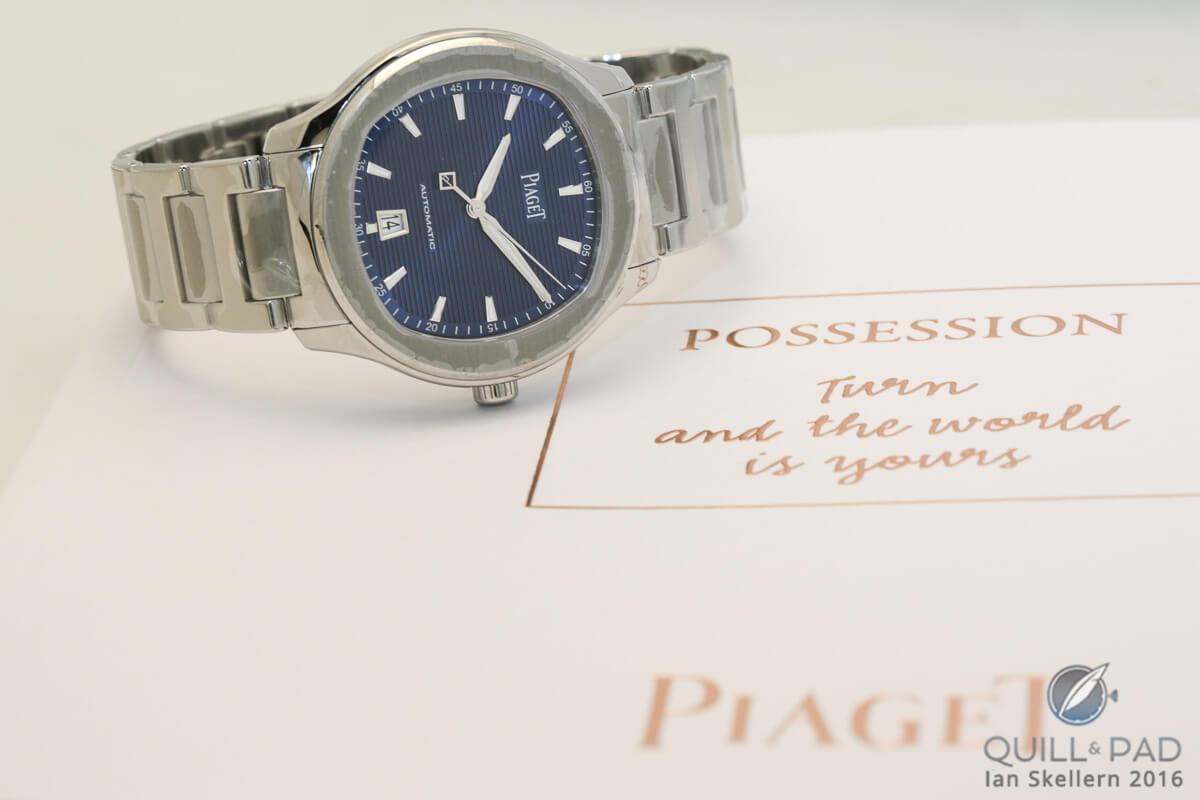
Piaget Polo S blue dial
For almost a decade Piaget went without a steel watch in its collection, but not without a sportier watch. In 2009, the Polo 45 took over from where the Upstream left off. It was crafted in titanium with steel gadroons (polished slightly domed elements on the case) and a rubber strap. A time-only timepiece sold for $12,300, it is still part of the current collection.
The Polo 45 was a refreshing and modern take on the original Polo from 1979, a design that ruled the ensuing decade as a luxurious sporty watch in the collection.
Is this a Polo?
This is also where my confusion came from when I watched the reveal of the new Piaget Polo S live on my laptop. This watch may be called Polo, but it shares none of the characteristics that make the Polo a Polo. It’s almost like when Daniel Craig was introduced as James Bond: he was definitely not the usual gentleman in a suit with a sense of humor, but rather Jason Bourne’s better dressed cousin.
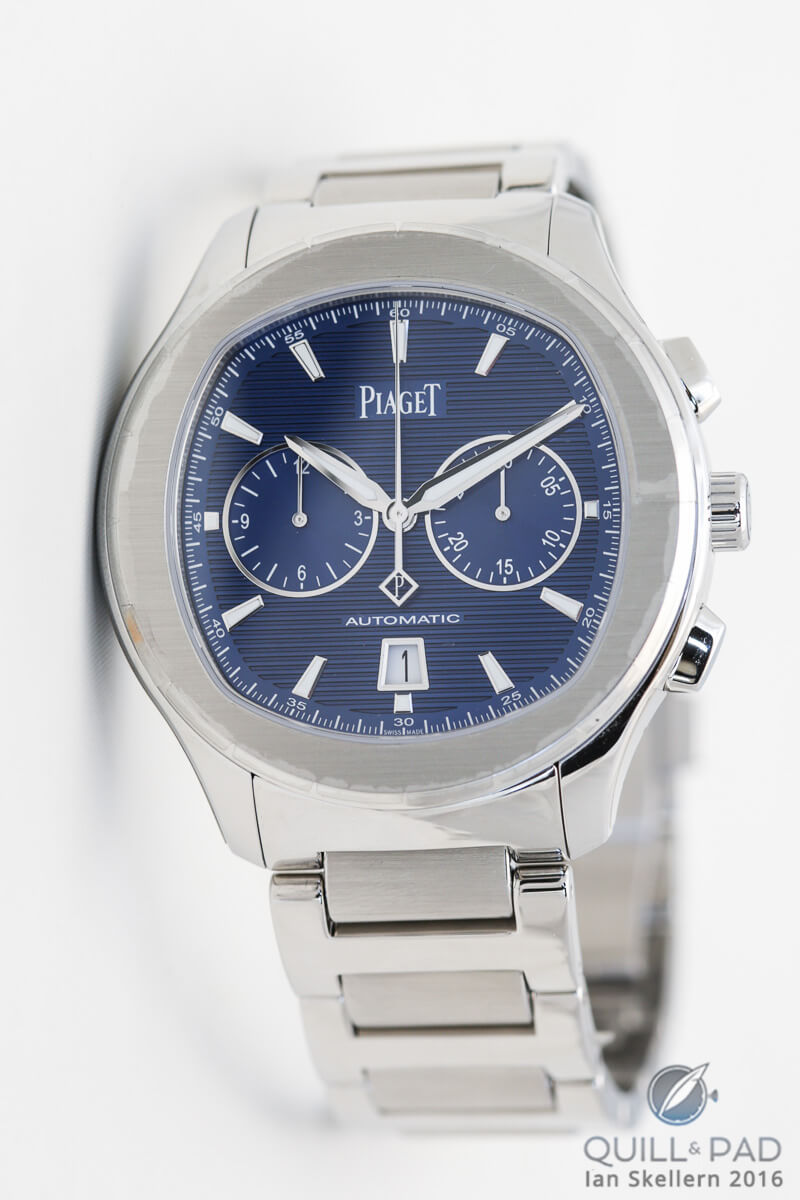
Piaget Polo S chronograph with blue dial
This is actually not the first time that Piaget has created a Polo model in this fashion. In the 1990s the Polo also left behind its typical gadroons for a more traditional case and dial. In my opinion, the new Polo S shares more resemblance with Piaget’s Emperador Coussin, only with a much wider bezel.
The result is a design that more closely resembles other high-end steel watches than you would generally expect from a manufacture with the stature of Piaget.
I understand the need for a steel watch in the collection, even though it falls outside the company strategy that has worked so well for Piaget for more than half a century.
Customer desires have changed; the markets have changed; and being part of the Richemont group, the requirement to make a profit for the shareholders remains important.
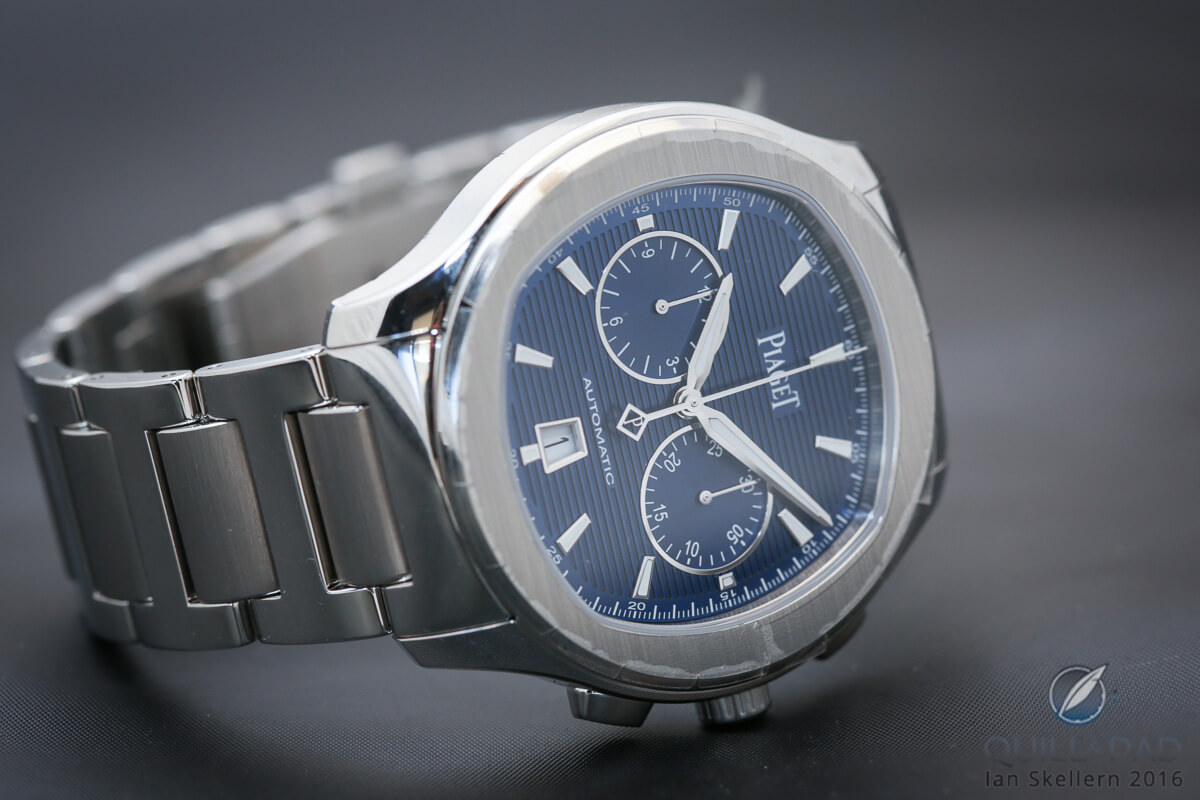
Piaget Polo S chronograph blue dial
Introducing a steel watch is a logical way to expand your customer base and increase revenue. Although to accomplish the latter, Piaget has to succeed in keeping production costs down, which means not repeating what precipitated the downfall of the Upstream.
Being a highly creative manufacture, it is only natural that people might be disappointed when your latest model seems less creative than usual. I think this is also amplified by Piaget itself in calling the Polo S “the watch for a new generation: a generation of game changers” and then combining it with a – for Piaget, at least – unprecedented spectacle involving celebrities like new ambassador Ryan Reynolds and Michael B Jordan as well as several others from around the world.
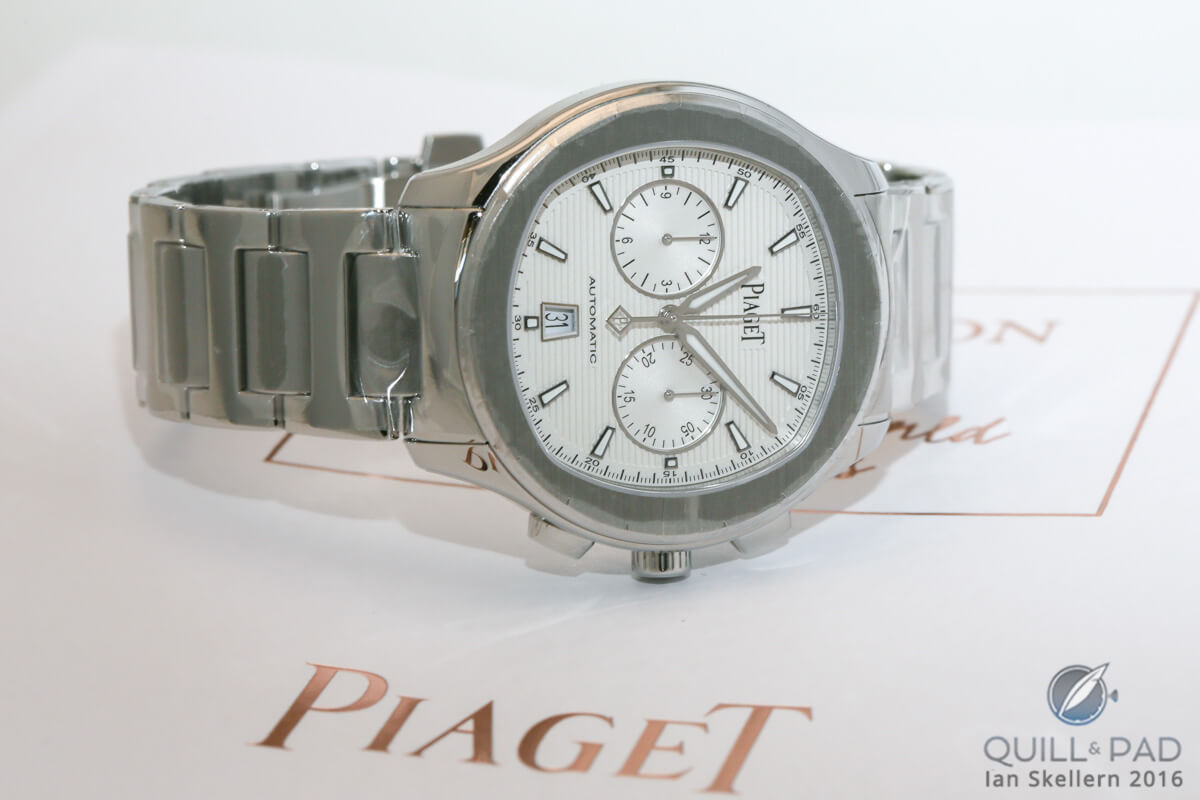
Piaget Polo S chronograph with white dial
This is quite a contrast with the past. Although Piaget’s watches have been on the wrists of countless celebrities – and the Polo had a reputation as a jet-set watch from the beginning – Piaget always had a tendency to let its watches do the talking rather than engage official ambassadors.
A new generation will have different desires, but are those met with the Polo S?
Although more or less a new concept for Piaget, there are plenty of steel watches with manufacture movements to choose from – crafted by prestigious brands like Cartier and Chopard and often available at an even lower price point than the $9,350 at which Piaget has priced the Polo S with time and date.
What does the Polo S offer a new generation that these watches don’t?
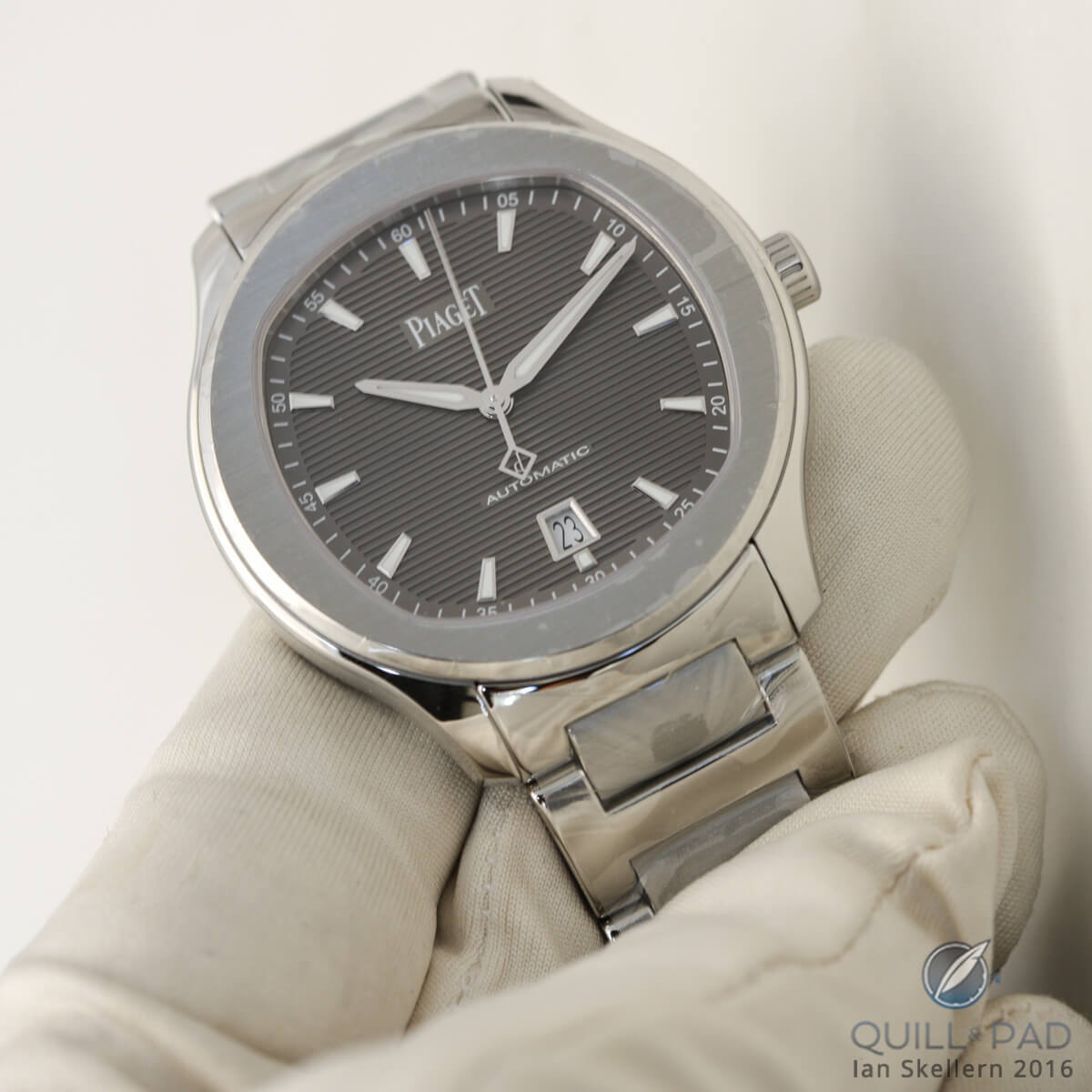
Piaget Polo S with brown dial
When everything is said and done, the Polo S is a fine watch. Caliber 1110P powering the chronograph is derived from Caliber 880P that powers the Polo 45 chronograph, an integrated chronograph movement with column wheel and vertical clutch.
Some recent detractors of the Polo S have suggested that Piaget has reduced the finishing of the movement because of its price, but I seriously doubt if there is much difference in finish between an 880P and the 1110P since costs have been brought down by simplifying the movement. I hope to do a side-by-side of both movements in the near future to establish this.
The fact is that the next generation of watch connoisseurs will probably have a significantly different view on watches and luxury than current and past generations.
The world’s elite car manufacturers scramble to turn everything into an SUV when they can’t they call a product a crossover, while jewelry brands are still puzzled as to how to create captivating designs that go with casual and active lifestyles.
These brands are all forced outside their comfort zones, only some more than others.
For more information, please visit www.piaget.com.
Quick Facts Piaget Polo S
Case: stainless steel, 42 mm
Movement: automatic Caliber 1110P
Functions: hours, minutes; date
Price: $9,350
Quick Facts Piaget Polo S chronograph
Case: stainless steel, 42 mm
Movement: automatic Caliber 1160P with integrated chronograph movement with column wheel and vertical clutch
Functions: hours, minutes; date, chronograph
Price: $12,400
Trackbacks & Pingbacks
-
[…] ED: While I generally very much liked the FiftySix line in its entirety – especially the younger design and steel cases – I was quite disappointed in the most basic model, called the “Self-Winding,” which is powered by a Richemont group ValFleurier movement without Geneva Seal that is based on the Cartier 1904 MC from 2012 and was used in 2016’s Piaget Polo S. […]
-
[…] Piaget might probably have wished that it could go back in time and further fine tune the Polo S after it was received with, shall we say, mixed feelings (see Piaget Polo S: Outside Its Comfort Zone). […]
-
[…] Such as going outside their comfort zones in the hopes of tapping into consumer markets that are outside their usual realms of activity (see Piaget Polo S: Outside Its Comfort Zone). […]
Leave a Reply
Want to join the discussion?Feel free to contribute!





















































I have noticed that the movement in the polo s chrono is, outside of superficial finishing details and branding, exactly the same as the movement in the Cartier Ronde Chronograph. Obviously both are Richemont brands, but both are claiming the movement is in house. Also the 3 hand polo s moment is very similar to the supposed in house movement in the Cartier Calibre.
Would greatly appreciate some clarity on this matter.
Hi Nic, Thanks for your message! Indeed there are a lot of similarities between Cartier’s 1904 MC range of movements and Piaget’s 800P/1100P range. Being part of the same group, and with watches that often serve a similar demographic with similar requirements, Piaget and Cartier sometimes combine R&D. No need to invent the wheel twice, when you have already a great design working for you. Although similar, both movements are indeed made in house, one in the manufacture of Cartier, the other at Piaget. There is no combined manufacture where such movements are made. I hope that this provides some more clarity on the topic!
Thanks Martin, that is an excellent answer. It is appreciated.
I notice that the 2 movements– the Cartier 1904 MC and the Piaget 1100 P look virtually identical, save for the rotor, the finishing, and cartier’s C-shaped balance wheel. Apart from finishing, there doesn’t look like there’s a whole lot of similarity between the Piaget 1100 P and the Piaget 800 P, from which it is supposed to be derived. The 1100 P is also the first Piaget to run at a modern 4hz. In addition, it is well known that the Cartier 430 MC hand wound movement is a re-finished piaget 430P movement. Arnaud Carrez, Cartier’s Marketing Director has stated about this, “We are very happy with the 430MC movement and it’s not like we’re obsessed to have only ‘In-House’ movements.”
In light of this acknowledged sharing of movements between the two watchmakers, I think it is entirely likely that Piaget’s 1100P is being manufactured by Cartier and simply popped into the Polo S at Piaget. Which would account for the engraved of the logo of the rotor, being replaced by a painted one. Or perhaps, the movement is being assembled and finished by Piaget, but from the parts made by Cartier.
The Polo S is a nice design, aimed at a younger, non-traditional Piaget buyer. As such, Millennials may just assume that the Polo is an entirely new line, who may not care anyway if it doesn’t look like an older version. I also don’t think any the similarity to the Nautilus/Aquanaut will be noticed, or if it is, many may actually assume that Patek is the one copying the Polo S!